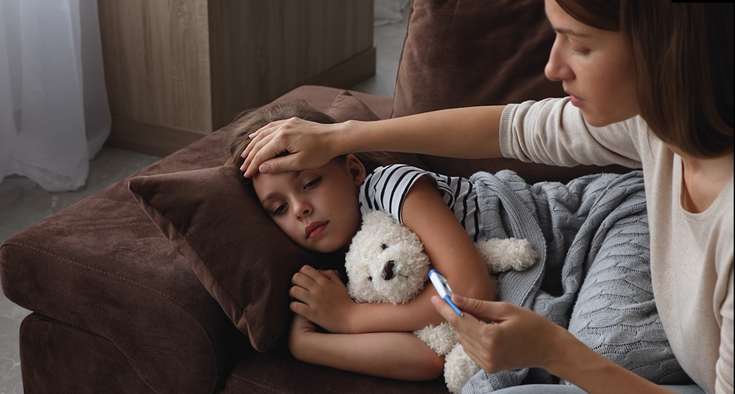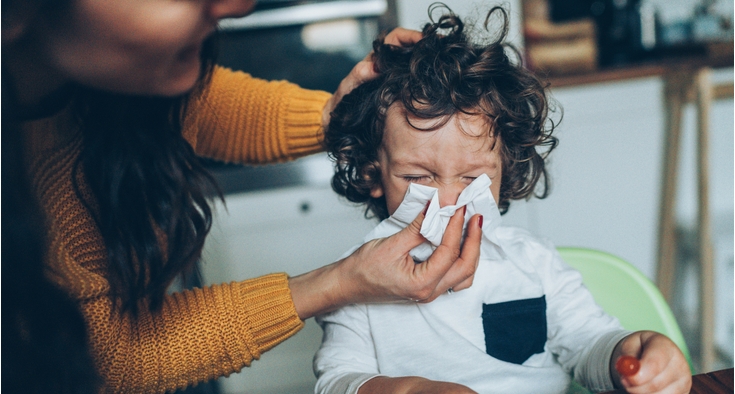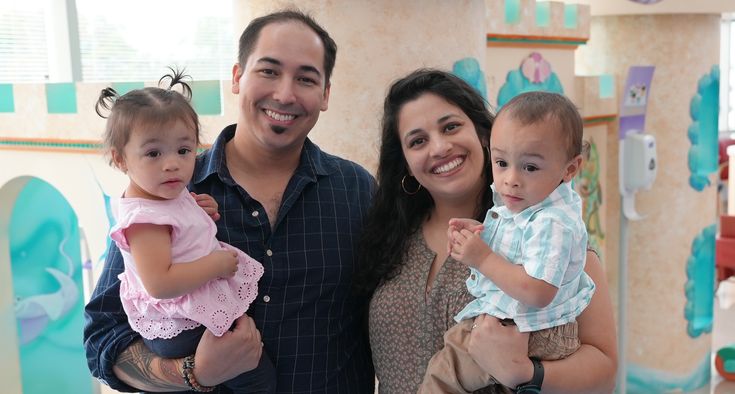One in nine children in the United States has been diagnosed with attention-deficit/hyperactivity disorder (ADHD), experiencing inattentiveness, distraction, difficulty with organization and task completion, and/or hyperactivity and impulsivity that impacts their quality of life. It’s also on the rise.
But ADHD is also a superpower, said Dr. Catherine Ohmstede of Novant Health Dilworth Pediatrics - Charlotte. Here’s why.
Find a caring pediatrician near you.

Children with ADHD frequently move a lot, talk a lot, and interrupt a lot because they are so excited about what they have to say. They can be some of the most fun, curious, interesting people you will meet. I love their energy and enthusiasm!
They frequently hyperfocus on activities that are interesting to them, but have trouble paying attention to something they find less interesting if there are fascinating things happening around them.
Their energy and curiosity are a great superpower, as long as they are able to learn in a traditional classroom and control their energy enough so they don’t distract their teachers and peers.
Differences in how ADHD shows up based on age and gender
Do boys and girls with ADHD typically have different behaviors?
Girls with ADHD are frequently quieter and still, so their inattention often goes unnoticed until the parents notice their grades aren't as good as they would expect, often in middle school when the material becomes more difficult and requires sustained attention to learn. (More on early signs of ADHD here.)
At home, the biggest struggle for many families is getting out the door for school on time. Trying to push a child with ADHD to do a series of tasks under time constraints can be stressful and difficult. Homework can also be quite challenging. Trying to get their child to sit and learn to read or get through an assignment can be exhausting for both parents and children.
Identifying ADHD in children
As a pediatrician, how do you identify ADHD in children?
Most ADHD can be diagnosed and treated by a child's pediatrician. We use an evidence-based tool that includes questions for parents and teachers about a child's behavior and school performance. Pediatricians today receive special training in prescribing ADHD medications and providing guidelines for schools about accommodations in the classroom.
In some special circumstances, the pediatrician might refer a patient to a developmental-behavioral pediatrician. If a child also experiences anxiety, depression or other behavioral health challenges, sometimes we will refer to psychiatry to help manage multiple medications for the various conditions.
Are parents ever hesitant to give their child a “label”?
I tell parents: your child’s going to get a label one way or another. If they’re getting written up every day for disruptive behavior, the label they are given is a lot less desirable than “ADHD.” If they aren’t successful in school, the label they will give themselves is a lot less desirable than “ADHD.”
When I talk with kids themselves about their diagnosis, I don’t talk about it as a “disorder.” Instead, I use very positive language: “bouncy, creative, energetic, curious, fun.”
The diagnosis is just how professionals talk to one another about what will help the child, and helps your child access supports like behavioral therapy, classroom accommodations and medication. (More on that below.)
What do you say to parents who may be struggling with their child's ADHD diagnosis, or who need a pep talk about celebrating their child for who they are?
I tell families that every society needs people who can sit and sew all day so people have clothes, and others to run back and forth to the river all day so people have water. There is nothing better or worse about being a high-energy person, and it is only a "disorder" if it disrupts others or gets in the way of the child's ability to learn in the classroom.
Accepting that they may need medication to thrive in a traditional classroom setting doesn't mean there is anything wrong with them; it might just be that their energy isn’t suited for a traditional classroom and they need additional tools to be successful in that environment.
Nonmedication strategies for kids with ADHD
What are some nonmedication strategies that help kids with ADHD?
Best doctors. Amazing nurses. Remarkable care.
Click here to read more tips from children's health experts.
At school, teachers can seat children with ADHD at the front of the classroom and away from talkative peers. If the child is disruptive in the classroom, occupational therapy can help them become more aware of their body and develop self-regulation skills.
Ideally, all patients who are diagnosed with ADHD should receive full psychoeducational testing, which parents can request from the school district (or have done through an educational psychologist if the child does not qualify for testing from the school district). This type of testing helps parents and teachers understand how their child's brain works and can detect any learning differences like dyslexia or learning disorders that might benefit from specialized interventions.
At home, parents can help by setting up places where their child keeps their shoes, backpack, and other items so it is easier to find their belongings; checking their child's backpack for assignments that need to be completed; communicating with teachers about their child's performance in school; reading with their children; and encouraging plenty of sleep, healthy food and outdoor time, while minimizing screen time, which tends to overstimulate children with ADHD.
If parents are struggling with their child’s behavior at home, a type of therapy called Parent Child Interactive Therapy can help a lot.
Medications for children with ADHD
Now let’s talk about medication. Are parents eager — or nervous — to have their child try medication?
Most parents are resistant at first. With younger children, I tell parents, “As long as the child is doing well in school, feels good about themselves, and the teacher is not reporting disruption to others in the classroom, there’s no reason we would put a child on medication just because they have behaviors that meet criteria for ADHD.” If any of those are happening, though, we have options.
How do you address parents’ fears about medication?
I’ve been in practice 20 years. Like most people, initially, I tried to avoid prescribing medication as much as possible because we would love for our kids not to need medication to be successful.
Over time, as I learned more about ADHD and watched family after family transformed by getting their child treatment, I learned that there are some children who are going to thrive better with treatment — and maybe there are some who are never going to be successful in school if they don’t get treatment.
Our medicines are extremely effective, and over time and through experience, I started to look at it more as an obligation to give kids the tools they need to be successful in the environment we’re requiring them to live in.
Parents say that they don’t want their child’s personality taken away. I reassure them: there’s no need to take away what’s amazing and special about their personality. Communicate with your pediatrician, so if your child seems “flatter” or there is another concern like side effects, we can try a new dose or a different medication.
What do ADHD medications do and how do they work?
These medications improve attention, help children direct their focus, and reduce impulsive behavior.
“Use it or lose it” is very true in the childhood brain: If your child is unable to learn, sit still, or have positive social interactions now, they may continue to have difficulty as time goes on. If we can help them to control their impulsivity and stay focused on tasks at school and at home, they’re in a better position to learn and develop important skills that will help them throughout their lives.
There are many ADHD medications on the market — both stimulant and nonstimulant medications — and generic drugs are available. Common stimulants include methylphenidate (brand names Ritalin, Concerta, and Focalin) or amphetamines (brand names Adderall and Vyvanse); common nonstimulant medications include atomoxetine (brand name Strattera) and guanfacine (brand names Tenex and Intuniv). Your pediatrician will talk with you about “short-acting” and “long-acting” medications, which refers to how long the medication is in the child’s system before it wears off for the day and lets them go to sleep.
When a child finds the right medication for them, parents quickly realize that it’s the right thing to do for their child. Usually we start seeing better behavior reports from school, there’s less stress in the household because parents are struggling less in the household, and there’s a lot more pride in their children and how they do at school. When you ask the children how they feel about it, they tell you they like getting good behavior scores, they like getting good grades, and they notice a difference.
Every child wants to be good, and every parent wants their child to be successful. This is one tool that often makes a big difference for kids.
How to handle the ADHD medication shortage
There’s been an ongoing shortage of ADHD medication in the United States during the last two years. How should families handle this?
This has been quite difficult for families. Stimulant medications for ADHD are considered “controlled substances” and are tightly regulated. Clinicians can write prescriptions for no more than 90 days at a time, and pharmacies cannot fill 30-day prescriptions until 28 days after the last refill. That means families can get a refill no earlier than two days before the child's last dose of medication. If the pharmacy does not have the medicine in stock, families have to find the medication at another pharmacy and contact their pediatrician for another prescription, often leading to delays and missed doses.
I recommend families schedule a three-month medication recheck with their prescriber three weeks after they pick up their last dose of medication, and call the pharmacy the day of the visit to make sure the medication is in stock.
That gives them time to find the medicine at another pharmacy if needed prior to the visit, so they can let the clinician know during the visit which pharmacy has the medicine. This prevents back-and-forth messages with the clinician that can lead to delays in picking up the medication.
Families can also call their insurance company to find out if their health insurance will cover a 90-day supply through a specific mail order pharmacy, and request the clinician send the refills to that pharmacy once the patient is on an effective established dose. This can reduce the monthly scramble to find the medicine that allows their child to succeed in school, build strong relationships with teachers and peers, and develop confidence in themselves as a capable, successful student.
Ohmstede is also the pediatric physician leader for Novant Health’s Charlotte region.













